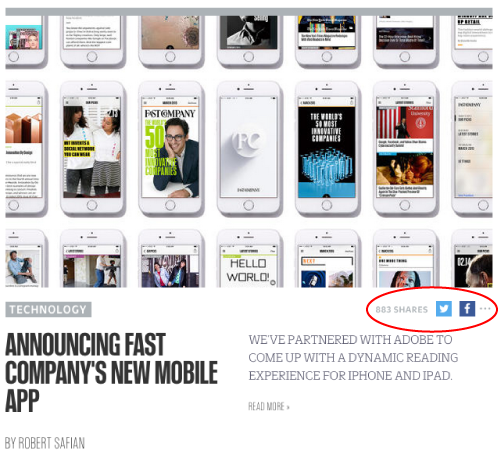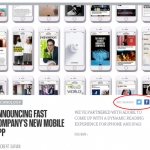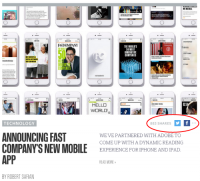Gaining An edge With Dynamic Social Share Icons
March 9, 2015

Digital publishers are often on the entrance of the curve on the subject of adopting the newest in social media. the way in which individuals eat media these days, they need to be to live on. The vast majority depend on social for a ton of their visitors. Thirty-4 p.c (and rising) of writer site visitors got here from the top five social networks as of January 2015, in step with Shareaholic. The social networks, in flip, have up to now been generous to the publishers as smartly, with natural reach far larger than brands. Between November 2013 and February 2014, Buzzfeed and business Insider noticed a 20 p.c and 16 % gain, respectively, in referral site visitors from fb, while brands and “viral” websites’ referral traffic plummeted.
I’ve additionally seen that the highest publishers take into account the significance of earned social — when readers share articles on their very own — and have adopted social icon methods to maximize sharing from their readership.
Take these two FastCompany articles, for instance:


You’ll discover, circled in red, that FastCompany limits their social icons to just two icons — the two networks which their readers have shared the particular article most. the primary article has Twitter and fb, and the 2nd article has LinkedIn and Twitter.

when you click on on the article, the page presentations the identical two icons. but whilst you mouse over the dots, it finds all of the social icons. And when you mouse over each and every icon, they give you the exact share numbers for each and every social network. this article has been shared 224 times on LinkedIn, 132 occasions on Twitter, ninety five instances on fb, 20 times on Google+, and two times on Pinterest.
Oddly, at the bottom of the article, FastCompany displays large facebook and Twitter buttons, no matter what. It seems like a strange inconsistency. now not certain what’s happening there.
Now take Buzzfeed.
Like FastCompany, Buzzfeed changes their share buttons in accordance with reader behavior. not like FastCompany, they also keep in mind how readers landed on the article.

It’s a beautiful subtle difference, however once I got here to the article from Twitter, they put the Twitter icon first. after I came from facebook, they put the fb icon first. It makes sense — if i discovered an editorial from a social community, likelihood is better that I’m energetic and able to share on that same network than a distinct one. (When there’s no referrer (direct site visitors), the FB icon is the default first social icon, when you had been curious.)


also apparently, Buzzfeed deals totally different methods to connect in line with the article class. The Buzzfeed “Buzz” class bargains buttons to connect on fb, Pinterest, and Twitter, whereas the Buzzfeed “news” category bargains buttons to attach on fb and Twitter. I’m keen to wager that Buzzfeed saw that no person was once sharing information articles on Pinterest. If no one is the use of it, take it out! It’s better to only put off it than let it distract readers.
These concepts can and most surely should be applied to model content material and merchandise. Too continuously, social sharing is an afterthought to the ecommerce experience. Icons are slapped on without much idea, and in consequence, don’t get used very incessantly. It’s an enormous missed possibility.
on the very least, determine which social channels your consumers are actually the use of. If Pinterest is a huge traffic and conversion driver, put a major “Pin It” Pinterest button right to your product pictures. If Google+ is a ghost town on your model and target audience, don’t waste treasured real estate with that icon. take away it and make the rest of the buttons larger.
as the FastCompany and Buzzfeed examples show, there’s a ton of alternatives to tweak the way you present social sharing buttons to optimize your earned social sharing. Analyze your conversion knowledge and your site visitors knowledge, make some hypotheses, and take a look at! It’s the one way to in finding out what works highest in your particular model and acquire an side for your competitors.
Digital & Social Articles on industry 2 group
(268)




